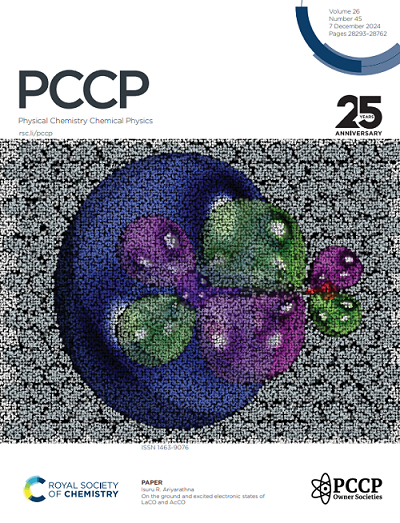通过深度学习分子动力学揭示富勒烯的形成和相互转化
IF 2.9
3区 化学
Q3 CHEMISTRY, PHYSICAL
引用次数: 0
摘要
利用分子动力学模拟中的深度神经网络电位,这项研究揭示了富勒烯形成和相互转化的见解,特别是在冷却退火过程中。我们的深度学习增强方法有效地模拟了碳蒸汽中C2单元生成富勒烯的过程,突出了碳密度在结构结果中的关键作用,也在初级铁-碳体系中。该研究提供了富勒烯生成分子动力学模拟的差异,也证明了深度学习在研究复杂碳结构方面的潜力,为进一步研究富勒烯家族铺平了道路。本文章由计算机程序翻译,如有差异,请以英文原文为准。

Unveiling fullerene formation and interconversion through molecular dynamics simulations with deep neural network potentials†
Utilizing deep neural network potentials within molecular dynamics simulations, this research uncovers insights into fullerene formation and interconversion, particularly during the cooling stage of the annealing process. Our deep learning-enhanced approach effectively models the generation of fullerenes from C2 units in carbon vapor, highlighting the critical role of carbon density in structuring outcomes in a primary iron–carbon system. This study provides differences in molecular dynamics simulations for fullerene generation and also demonstrates the potential of deep learning in investigating complex carbon structures, paving the way for further investigations into the fullerene family.
求助全文
通过发布文献求助,成功后即可免费获取论文全文。
去求助
来源期刊

Physical Chemistry Chemical Physics
化学-物理:原子、分子和化学物理
CiteScore
5.50
自引率
9.10%
发文量
2675
审稿时长
2.0 months
期刊介绍:
Physical Chemistry Chemical Physics (PCCP) is an international journal co-owned by 19 physical chemistry and physics societies from around the world. This journal publishes original, cutting-edge research in physical chemistry, chemical physics and biophysical chemistry. To be suitable for publication in PCCP, articles must include significant innovation and/or insight into physical chemistry; this is the most important criterion that reviewers and Editors will judge against when evaluating submissions.
The journal has a broad scope and welcomes contributions spanning experiment, theory, computation and data science. Topical coverage includes spectroscopy, dynamics, kinetics, statistical mechanics, thermodynamics, electrochemistry, catalysis, surface science, quantum mechanics, quantum computing and machine learning. Interdisciplinary research areas such as polymers and soft matter, materials, nanoscience, energy, surfaces/interfaces, and biophysical chemistry are welcomed if they demonstrate significant innovation and/or insight into physical chemistry. Joined experimental/theoretical studies are particularly appreciated when complementary and based on up-to-date approaches.
 求助内容:
求助内容: 应助结果提醒方式:
应助结果提醒方式:


